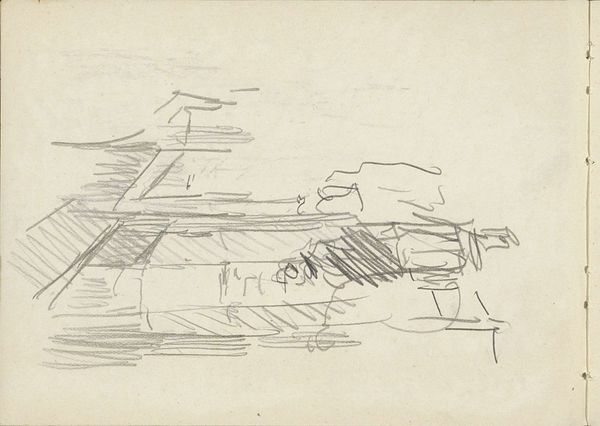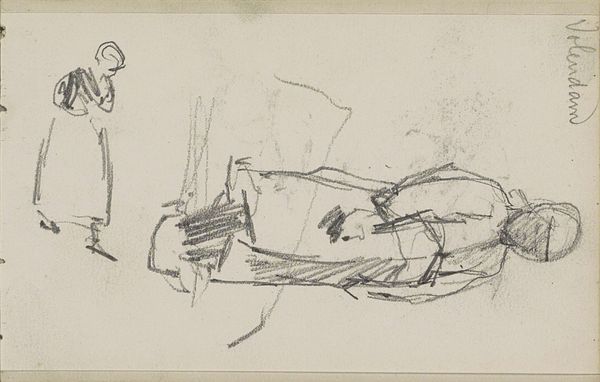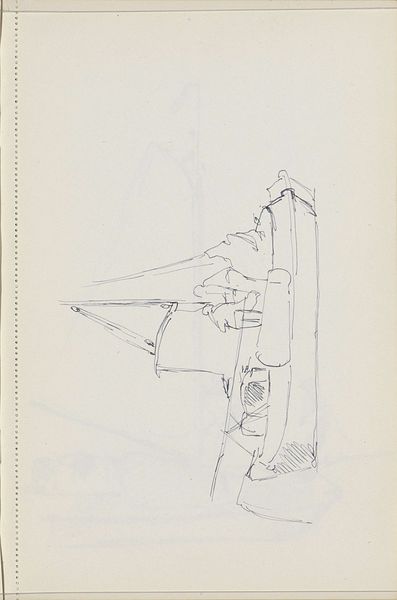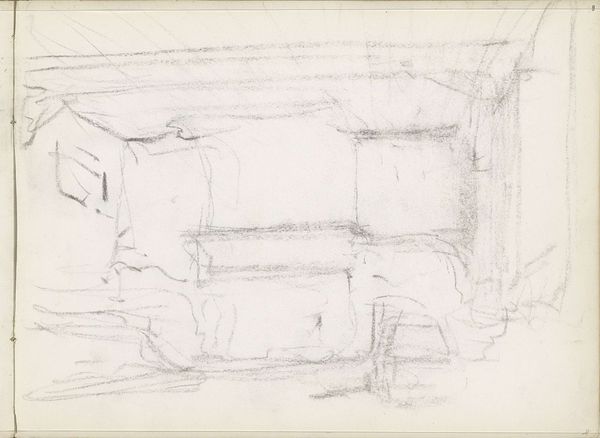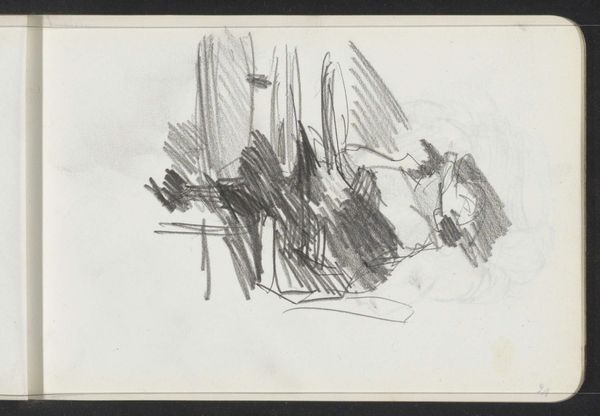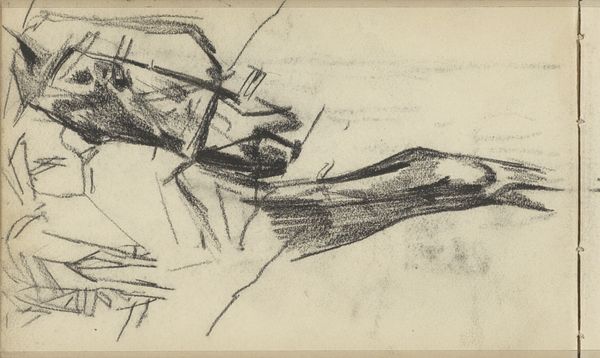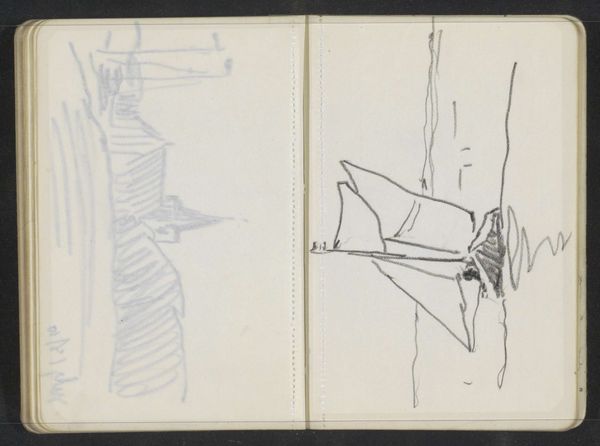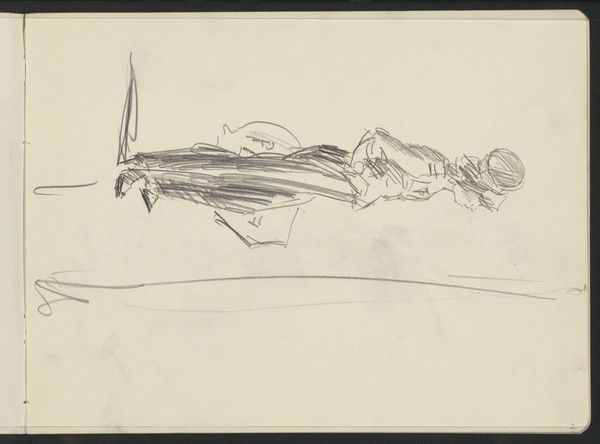
drawing, graphite
#
drawing
#
pen sketch
#
graphite
#
cityscape
Copyright: Rijks Museum: Open Domain
Curator: This sketch by Willem Witsen, dating from about 1901 to 1907, is entitled “Kade met schepen, mogelijk het Damrak te Amsterdam.” It's currently held here at the Rijksmuseum. Editor: Well, that’s a mouthful, but looking at it, I’m immediately drawn to the simplicity. There's a sense of… industrious calm, wouldn’t you say? And the pen work is so immediate. Curator: It’s rendered in graphite and pen, primarily. Witsen was a master of suggestion; he uses very few lines to create a complex scene. This drawing gives insight to the materials used during this time that helped create the image that we now know, photography, art, advertisements all rely on graphite for mock ups. Editor: It speaks to the bustle of Amsterdam's harbor, a hub for trade and labor, but almost dreamlike, wouldn’t you agree? One wonders about the type of pen used and the source of its materials, was it a simple goose quill or a new fancy machined fountain pen? Curator: Oh, absolutely. The quick strokes capture the essence of movement and light playing on the water and the ship's hulls. Imagine the coal being transported from the ports directly from ship to store front. Editor: Precisely. What I find fascinating is how Witsen depicts this moment of economic production using such minimal means. How the pen pushes back against its constraints, using limited ink to conjure an entire waterscape. And how that intersects with the rising interest in modern technology, of materials transformed by industrial manufacturing. The social realities shaped by that. Curator: A fair point, because Witsen seems to me more interested in preserving fleeting moments, turning industry into memory almost. Editor: An astute observation that reveals how our interpretations are shaped by subjective context! Curator: Indeed. It's why these old sketches, born from specific conditions of making and place, still have so much to offer to anyone passing by centuries later. Editor: Thank you. The way that art, like all forms of making, depends so greatly on how things are assembled from disparate things… something to keep in mind next time you look closely at the things around you.
Comments
No comments
Be the first to comment and join the conversation on the ultimate creative platform.

